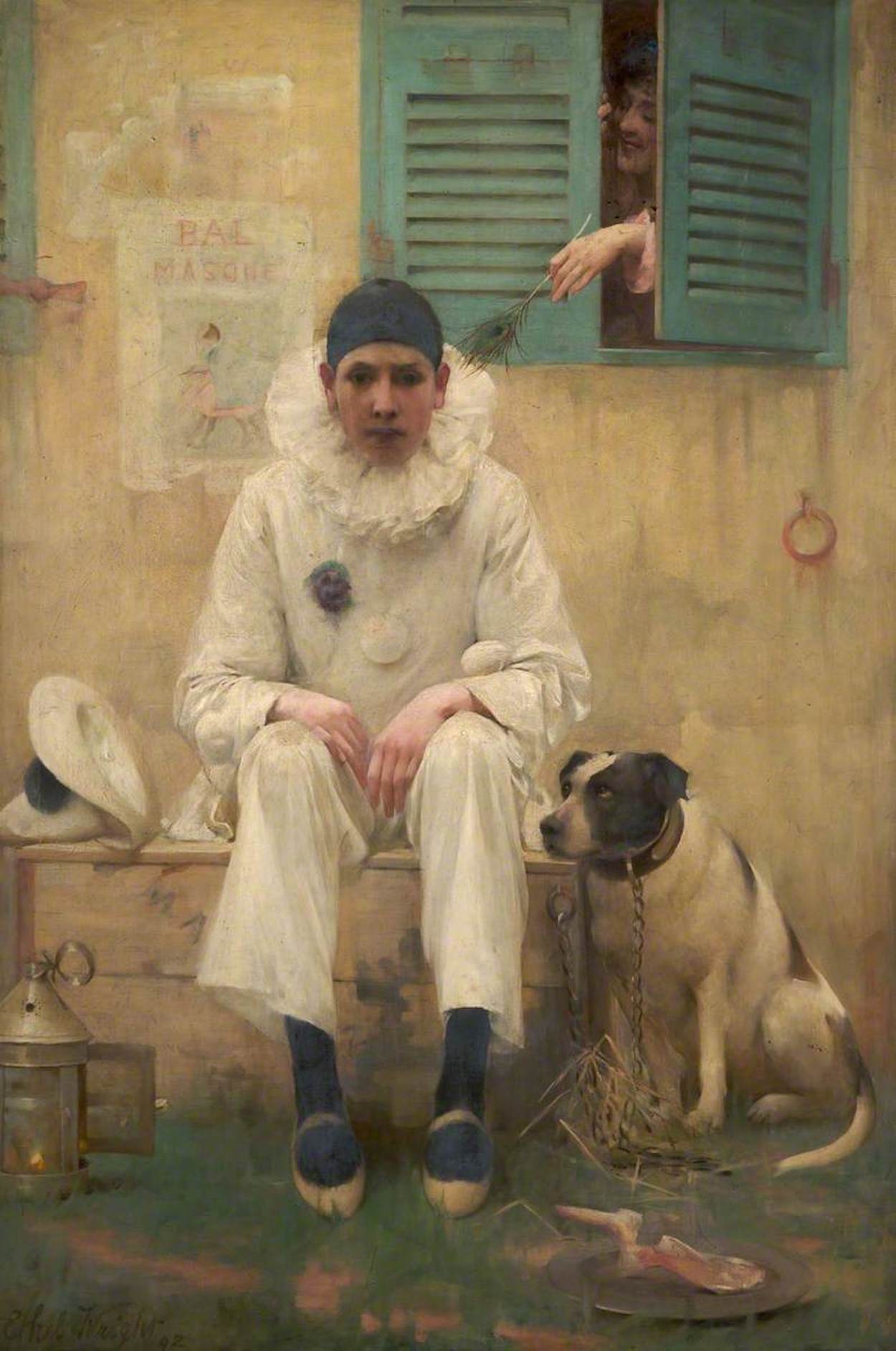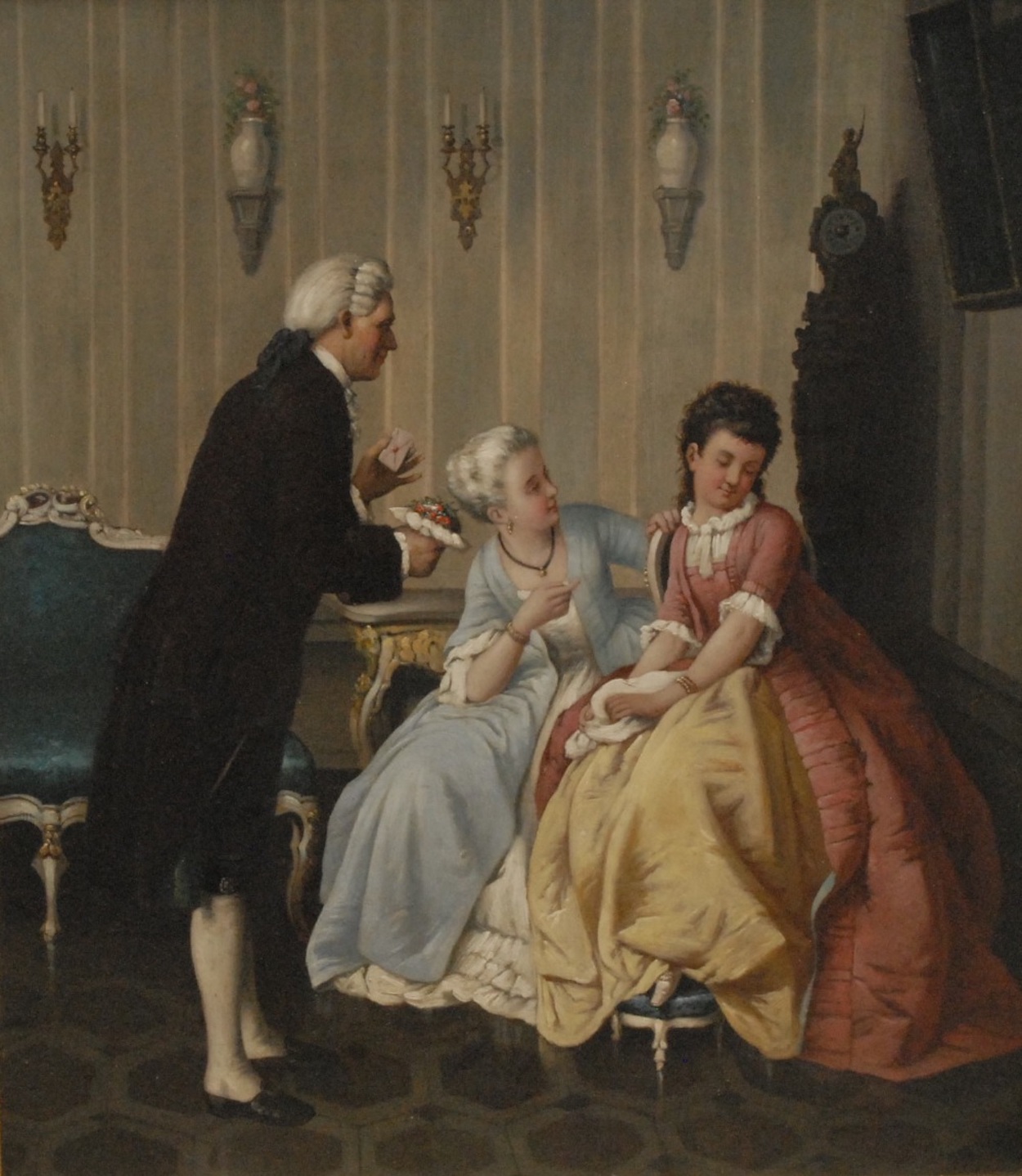If you don't like clowns, don't read today's feature.
Pierrot is a stock character of pantomime and commedia dell'arte whose origins are in the late 17th century Italian troupe of players performing in Paris and known as the Comédie-Italienne. His character in contemporary popular culture—in poetry, fiction, and the visual arts, as well as works for the stage, screen, and concert hall—is that of the sad clown, pining for love of Columbine, who usually breaks his heart and leaves him for Harlequin. The defining characteristic of Pierrot is his naïveté: he is seen as a fool, often the butt of pranks, yet nonetheless trusting.
In 19th century England, Pierrot figured prominently in the drawings and paintings of many artists; various writers, such as Henry Austin Dobson, Arthur Symons, or Olive Custance, seized upon him for their poetry. Ethel Wright painted Bonjour, Pierrot! (a greeting to a dour clown sitting disconsolate with his dog) with a more bourgeois vein in 1893. Nothing can console poor Pierrot—even tickles seem to be inappropriate here.
Fancy an unharmful circus visit? Welcome to the wonderful circus of Dame Laura Knight!


 Ethel Wright
Ethel Wright